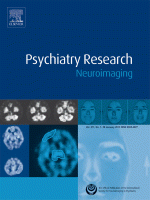
“Hemp nuts are mature cannabis seeds obtained after hulling and stir-frying that are commonly used in traditional Chinese medicine for treating functional constipation. In this work, we screened hemp nut products, classified them, and verified the legality of consuming them.
A total of 18 products were purchased from Taiwan, China and Canada. Validated high-performance liquid chromatography with tandem mass spectrometry methods were developed for analyzing the cannabinoid (i.e., Δ9 -tetrahydrocannabinol (THC), cannabidiol (CBD), and cannabinol) content of the products and the concentration of urinary 11-nor-9-carboxy-THC.
Chemometric techniques, namely hierarchical clustering analysis (HCA) and principal component analysis (PCA), were applied for rapidly classifying 11 concentrated powder products in Taiwan. A pilot human study comprising single and multiple administrations of a product with 1.5 µg/g of THC was conducted to examine the urinary 11-nor-9-carboxy-THC concentration. Through optimization of 32 full factorial design, using 60% isopropanol as the extraction solvent exhibited the highest yield ofcannabinoids and was applied as the optimal condition in further analysis.
The results of HCA and PCA on quality evaluation were in well agreement; however, the tested products possessed distinct CBD-to-THC ratios which ranged widely from 0.1:1 to 46.8:1. Particularly, the products with CBD-to-THC ratios higher than 1:1 were the majority in Taiwan.
Our data suggested that all the tested hemp nut products met the Taiwan restriction criteria of 10 µg/g of THC. We propose a usual consumption amount of hemp nut products in Taiwan would unlikely to violate the cut-off point of 15 ng/mL of urinary 11-nor-9-carboxy-THC.”
http://www.ncbi.nlm.nih.gov/pubmed/27590030









